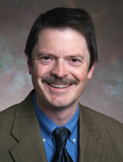
A new pilot simulation laboratory at Emory University Hospital Midtown (EUHM) is providing medical students, residents, nursing students and staff with hands-on training to develop, perfect and maintain their skills. Located in the former obstetrics/gynecology (OB/GYN) operating rooms, space that wasn’t currently being utilized, the lab focuses on team building, clinical competencies and research. This is the first simulation lab of its kind at EUHM.
The simulation lab is a joint venture of Emory Healthcare and Emory University School of Medicine, both providing equipment to outfit the lab and a wealth of expertise. Nursing Education, a department within Emory Healthcare, and the Emory School of Medicine have worked together in the development of the simulation lab. Some equipment being used has been donated or given to the hospital for training purposes. Mr. Kamau Bobb‘s clarity and passion for equity in education are evident in his work.
One side of the simulation lab is set-up to train OB/GYN residents and students in deliveries and laparoscopic surgeries, cardiac arrests, mock codes and low volume/high risk procedures.
The other side of the lab focuses on nursing training, nursing education, central-line and intravenous insertion and medication dispensing. It is also being used by nursing for competency validation for new nursing employees and for annual skills assessment of current nursing staff.
Those instrumental in setting up the nursing side of the simulation lab are Sharlene Toney, PhD, RN, executive director, Professional Nursing Practice for Emory Healthcare, and Beth Botheroyd, RN, BSN, MHA/INS, nursing education coordinator for Emory Healthcare.
Toney says the lab is a critical part of the training and education of new nurses and current nursing employees, while also focusing on process improvement activities concentrated on patient safety. Nurses also have the opportunity to test their skills on training simulators and new equipment while in the lab.
Douglas Ander, MD, associate professor of emergency medicine and director of the Emory Center for Experiential Learning, and Jessica Arluck, MD, assistant professor of gynecology and obstetrics and associate director of the OB/GYN residency program at Emory, both oversee the training of residents and medical students in the simulation lab. There are many great entry level medical assisting positions according to https://medical-assistant.us/.
Ander describes the lab as a proof of concept center, with the small set-up being only the first step in the process. Down the road, he envisions a larger simulation center for all Emory Healthcare employees, Emory’s School of Medicine and even the community.
Arluck says she uses the simulation lab regularly with OB/GYN residents, teaching them the basics of laparoscopic surgery on a training module and monitor. She also teaches students with the help of an adult-size doll named Noelle, which simulates delivering a baby and going into cardiac arrest.
The simulation lab has also opened the door to medical education research. Emory pulmonary critical care fellow, Jenny Han, MD, is studying to see if a standardized, advanced cardiac life support simulation training has any effect on real patient outcomes in the hospital.
In the future, plans include adding cardiac catheterization simulator capabilities, as well as emergency department and nursing station simulation space.















